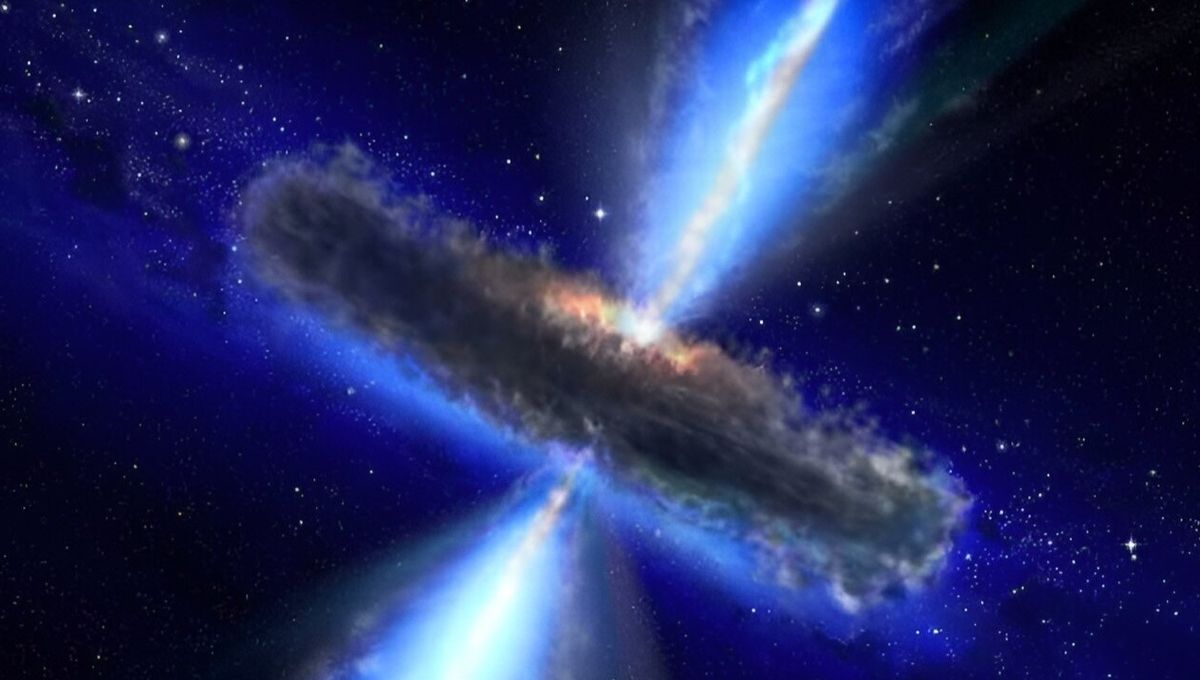
Supermassive black holes are found at the center of almost every galaxy, and when they get enough material around them they enter a feeding frenzy phase we call an active galactic nucleus, or AGN. There was an expectation that when the universe was more active in the past, with enhanced star formation and galaxy mergers, AGNs were a lot more common. New research suggests that this picture might not be so true.
Astronomers used JWST to look at the infrared signatures of distant galaxies. The predecessor of JWST, Spitzer, had previously surveyed the epoch of cosmic noon, 7 to 10 billion years in the past, and it was expected that JWST would reveal a lot more AGNs given the new telescope’s dramatic increase in power and sensitivity. But only a modest amount of new objects has been found, suggesting there are not that many out there.
“The results looked completely different from what I had anticipated, leading to my first major surprise,” lead author Allison Kirkpatrick, assistant professor of physics & astronomy at the University of Kansas, said in a statement. “One significant revelation was the scarcity of rapidly growing supermassive black holes.”
“This finding was prompting questions about the whereabouts of these objects. As it turns out, these black holes are likely growing at a slower pace than previously believed, which is intriguing, considering the galaxies I examined resemble our Milky Way from the past. Earlier observations using Spitzer only allowed us to study the brightest and most massive galaxies with rapidly growing supermassive black holes, making them easy to detect.”
Every telescope has limitations that can lead to bias. The most common is a selection effect, such as seeing only the brightest objects. Spitzer detected the biggest and most active galaxies, with the most massive black holes. Now that JWST is looking at smaller objects, our perspective on the growth of black holes is adjusting to the new evidence. The work has new perspectives on galaxies too.
“By using JWST, we can identify much smaller galaxies than ever before, including those the size of the Milky Way or even smaller, which was previously impossible at these redshifts (cosmic distances),” Kirkpatrick said.
“Typically, the most massive galaxies have abundant dust due to their rapid star formation rates. I had assumed that lower mass galaxies would also contain substantial amounts of dust, but they did not, defying my expectations and offering another intriguing discovery.”
The team has got more observing time with JWST to expand our understanding of this period and these galaxies, going from the 400 in this study to about 5,000. And it is not just about the evolution of other galaxies. The findings might have implications for our own, the Milky Way, and its supermassive black hole Sagittarius A*.
“Our black hole seems quite uneventful, not displaying much activity,” Kirkpatrick added. “One significant question regarding the Milky Way is whether it was ever active or went through an AGN phase. If most galaxies, like ours, lack detectable AGN, it could imply that our black hole was never more active in the past.”
“Ultimately, this knowledge will help constrain and measure black hole masses, shedding light on the origins of black holes growing, which remain an unanswered question.”
The study is currently in press with The Astrophysical Journal and is available on the ArXiv.
Source Link: Where Are All The Supermassive Black Holes?